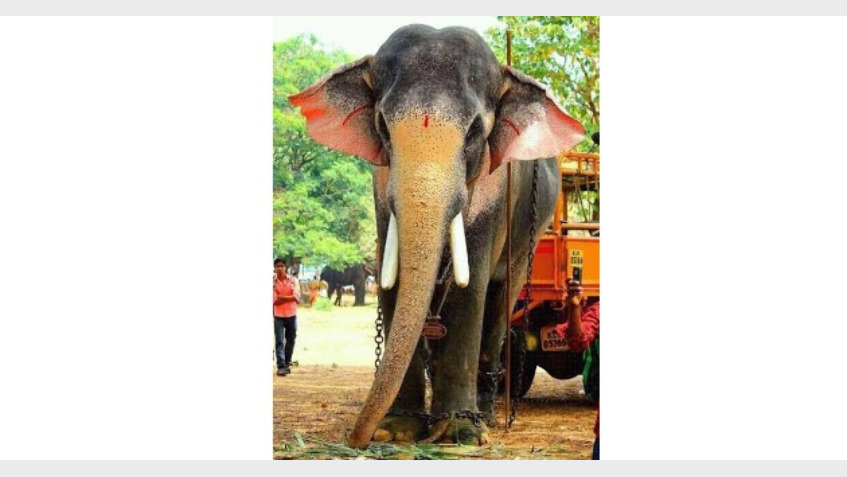Copyright Simple Flying

The Boeing 777's future is ultimately a two-track story. Legacy 777-300ERs will gradually transition into secondary roles, while the Boeing 777X family ultimately assumes the mantle. Boeing has gradually phased out Boeing 777-300ER production, with records showing only a single passenger delivery in 2024, which ultimately marked the end of the production line. Several Boeing 777-300ERs will continue to fly throughout the decade, with more airframes eventually migrating to being torn down and feeding robust spare parts markets. Boeing 777X service entries remain delayed, and both Boeing and its airline customers are now guiding to the first Boeing 777-9 services taking place in 2026. Despite this, demand from major operators remains strong, as the Boeing 777-9 offers improved performance in terms of capacity, operating economics, noise emission, and carbon output. The aircraft family's freighter variant is moving through an early build-out, one that was aimed at replacing and augmenting Boeing 777F and Boeing 747-400F fleets as cargo demand continues to rebound. The Boeing 777-300ER era is closing on the production front as the type remains visible in fleets and slowly moves into a source for spare parts. The Boeing 777X will define the aircraft's next chapter, while the Boeing 777-8F underpins the airline's large-freighter strategy, ultimately keeping all variants of the Boeing 777 in the manufacturer's ecosystem. What Is The Relationship Between The Boeing 777-300ER And The Boeing 777X The Boeing 777-300ER is the benchmark for a long-haul big twin-engine aircraft of the 2000s to the 2010s. The Boeing 777X is the aircraft's successor, and it was designed to keep the same mission. The aircraft is much larger and is exceptionally useful for long-range services. The aircraft also improves on the operating economics of the jet's predecessors, as well as lowering the noise footprint of earlier models. The Boeing 777X is a next-generation Boeing 777 model that is built on around three major changes. For starters, the aircraft offers a high-aspect-ratio composite wing with folding wingtips, which allows it to fit into the same types of gates as the older Boeing 777-300ER. The aircraft will also be fitted with GE9X engines that offer higher overall efficiency and lower overall carbon emissions. The jet's refreshed systems and cabin architecture ultimately support the plane's higher humidity, larger windows, and use of weight-saving materials. The Boeing 777-8 is the Boeing 777-300ER's direct replacement, and it carries roughly the same number of passengers with a better fuel burn per seat and lower community noise creation. This makes the aircraft a natural upgauge on the densest trunk routes. The larger-body Boeing 777-9 was designed to be somewhat of a replacement for higher-capacity four-engine widebodies. In practice, the Boeing 777-8F freighter has slowly begun to be the immediate successor to the Boeing 777F and the Boeing 747-400F. For airlines, this relationship is also about continuity. It allows airlines to easily transfer pilots from older to newer variants. Gate compatibility allows the airline to transition its fleets without rebuilding infrastructure. Strategically, the Boeing 777-300ER remains in service with several carriers as a long-term bridge between different family variants. A Deeper Look At The Boeing 777-300ER The Boeing 777-300ER is the definitive long-haul twin-engine aircraft designed to serve the needs of the 2000s and the 2010s. The model first entered service in 2004 with French flag carrier Air France. The aircraft offers both a stretched fuselage over the Boeing 777-300 and a higher overall takeoff weight, which allows the jet to offer exceptional performance. The aircraft features raked wingtips, strengthened structure, and General Electric GE90-115B engines. These were some of the most powerful turbofans ever to make their way onto a commercial jet. The aircraft typically seats around 360-400 passengers in a three-class configuration. It offers a maximum takeoff weight (MTOW) of around 350 tonnes, and the jet flies roughly 7,300 nautical miles at a cruising speed of Mach 0.85. This opened up new kinds of international trunk routes that previously could not be served nonstop by a Boeing 747. The Boeing 777-300ER is prized by airlines as it offers an exceptional combination of range, reliability, and operating economics, with two engines enabling lower fuel consumption and improved maintenance costs over four-engine predecessors. The aircraft's semi-levered main landing gear helps it rotate on short or heavy takeoffs. Here are some specifications for the Boeing 777-300ER, according to Boeing technical reports. The plane has also been certified for extended-range twin-engine operational performance standards, which allow the model to be used on efficient oceanic routes. Its ability to offer cockpit compatibility with many other Boeing 777 variants also simplified pilot training and the process of swapping the aircraft out for others when operations required a Boeing 777-300ER to step in as a substitute. It slowly became the best-selling variant of the Boeing 777 family. A Deeper Look At The Boeing 777-8 It is important to fully discuss the Boeing 777-8, as it is the aircraft that will fully replace the Boeing 777-300ER. The Boeing 777-8 helps keep some of the Boeing 777X family's biggest advances, such as GE9X engines, a new carbon-fiber wing with folding tips, and higher cabin humidity and lower cabin altitude. Weight-saving systems allow the jet to operate at a higher cabin humidity and lower cabin altitude, while also yielding lower fuel burns and reduced cabin emissions. The aircraft has a shorter fuselage than the Boeing 777-9, meaning that it can offer exceptional range while keeping a similar but not massive payload. The aircraft will thus be exceptionally useful on routes where the Boeing 777-9 will be too large, as well as those where the Boeing 777-300ER already runs into capacity or performance limits. Airlines are looking to shift towards larger business-class cabins, and the comfort of this next-generation model will make it a favorite among premium travelers of the future. From an operational standpoint, cockpit philosophy and gate handling commonality will ease the transition from Boeing 777-300ER models, and modern avionics, alongside predictive maintenance capabilities, will help the aircraft improve its dispatch reliability. From a financial perspective, the aircraft offers lower trip costs than the Boeing 777-300ER with comparable premium capacity and superior range capabilities. Which Airlines Are Going To Replace The Boeing 777-300ER With The Boeing 777-8? As of October 2025, Emirates and Etihad Airways are the only two airlines that have publicly announced they will be purchasing the Boeing 777-8. It is expected that both airlines will use the Boeing 777-8 to replace the Boeing 777-300ER, especially for premium-oriented transatlantic missions where the Boeing 777-9 would simply offer too much capacity. Emirates remains very interested in the Boeing 777-9 as well as the 777-8, and the carrier believes that both models have a role to serve in its network, replacing Boeing 777-300ER models. Etihad Airways will also be using the Boeing 777-8 selectively alongside Airbus A350-100 models. By contrast, Qatar Airways has elected to focus on the Boeing 777-9 and the Boeing 777-8F freighter. Neither would serve as a clear replacement to the Boeing 777-8. Importantly, many carriers are replacing the Boeing 777-300ER with the Airbus A350-1000, and the Boeing 777-8 is seemingly a relatively niche source of replacement for the Boeing 777-300ER, contrary to what manufacturer Boeing might want you to believe. Boeing certainly wishes it could sell more Boeing 777-8 models, but passenger airlines seem a bit more interested in the more capable Airbus A350 for these kinds of missions. A key factor behind this is the slow development timeline for the Boeing 777X. What Will Happen To Boeing 777-300ER Jets Once the Boeing 777X Enters Service? Many Boeing 777-300ER models will continue to operate for airlines well into the 2030s as bridges until enough Boeing 777X jets arrive. Large carriers will redeploy them to peak seasons, secondary long-haul routes, and high-density leisure services after newer flagship models take on the heaviest trunk routes. Some will get cabin refreshes, which will extend their market usefulness. Some models will then begin to exit mainline fleets and move to second-tier airlines, charter operators, and leisure specialists, where trip costs matter more than the latest technology. Cargo demand will ultimately be absorbed through some passenger-to-freighter platform conversions. Many models will also simply exit airline fleets and enter long-term storage. General Electric GE90 engines, landing gear, improved avionics, and aircraft structures ultimately support the aircraft's aftermarket value. There would be no shortage of buyers for Boeing 777-300ER spare parts. What Is Our Bottom Line? At the end of the day, the Boeing 777-300ER is an incredibly capable aircraft, and all of its variants serve a unique role in the market. Offering nonstop service to destinations all across the globe, airlines can rely upon the jet to serve some of their highest-demand trunk routes. However, as is the case with all incredibly successful aircraft, the Boeing 777-300ER's time on the market has come to an end. The jet will ultimately be replaced by a newer and more fuel-efficient model, much like almost every single aircraft that came before it. Boeing has carefully engineered the jet's successor as well.



